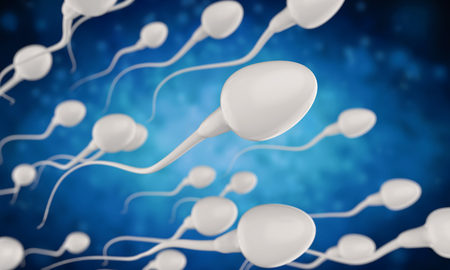Improved Technology to Preserve Sperm Stem Cells

Scientists at the Washington State University have developed new technology to improve preservation of sperm stem cells. Sperm stem cells need to be saved to preserve fertility in boys who are scheduled to undergo cancer therapy.
Saving Sperm to Preserve Fertility
If an adult man is diagnosed with a cancer of the reproductive organs, it is possible to obtain and freeze samples of sperm before chemotherapy and radiation, treatments which can render a man infertile. However, pre-pubertal boys do not produce sperm. Sperm stem cells are preserved in these young patients with the hope that the stem cells can be cultured and placed back in the testes after the cancer has been treated. In this way, the boy will be able to produce sperm once he reaches puberty.
Improved Technology to Preserve Sperm Stem Cells
Associate Professor Jon Oatley of the School of Molecular Biosciences at WSU and colleagues have begun developing an improved technology to preserve sperm stem cells. They hope the new technique will become the standard for preserving and culturing cells in human-like conditions. The new technique was described in the journal Stem Cell Reports.
Sperm Production from Stem Cells
Less than 1 percent of cancer patients are children, yet more than 10,000 children below the age of 15 are detected with cancer every year. Pre-pubescent boys risk azoospermia (no viable sperm) from cancer treatment. Although chemotherapy and radiation therapy may control the cancer, they could render the boy infertile. The inability to have children is a major quality of life issue, says Marvin Meistrich, an oncologist at the University of Texas.
In adult men, more than a thousand sperm are produced with each heartbeat. The source is a population of self-renewing sperm stem cells that are present since birth. Each stem cell gives rise to approximately 5,000 sperm.
Improvement in Viability of Sperm Stem Cells
Oatley and colleagues conducted experiments in pre-pubertal mouse pups. The team marked stem cells with a fluorescent tag. This allowed the investigators to observe the differentiation of progenitor cells into sperm cells.
The experiments showed that stem cells produce energy by two methods – glycolysis and oxidative phosphorylation. The second method can be harmful to DNA due to the production of free radicals. A stem cell with a damaged genome does not bode well for a lifetime supply of sperm for the individual. The scientists, therefore, studied methods to ensure stem cells rely on the safer method of energy production, i.e., glycolysis.
Interestingly, the team found that if oxygen levels were lowered by half and nitrogen was added to the environment, there was a dramatic improvement in the number of stem cells that were capable of producing sperm when introduced back into the testes. In fact, there was an eight-fold increase from 5 percent to 40 percent in terms of viability at six months. Further studies will examine whether genes can be turned on and off in the cultured stem cells.
References:
- https://www.medicalnewstoday.com/releases/316838.php


